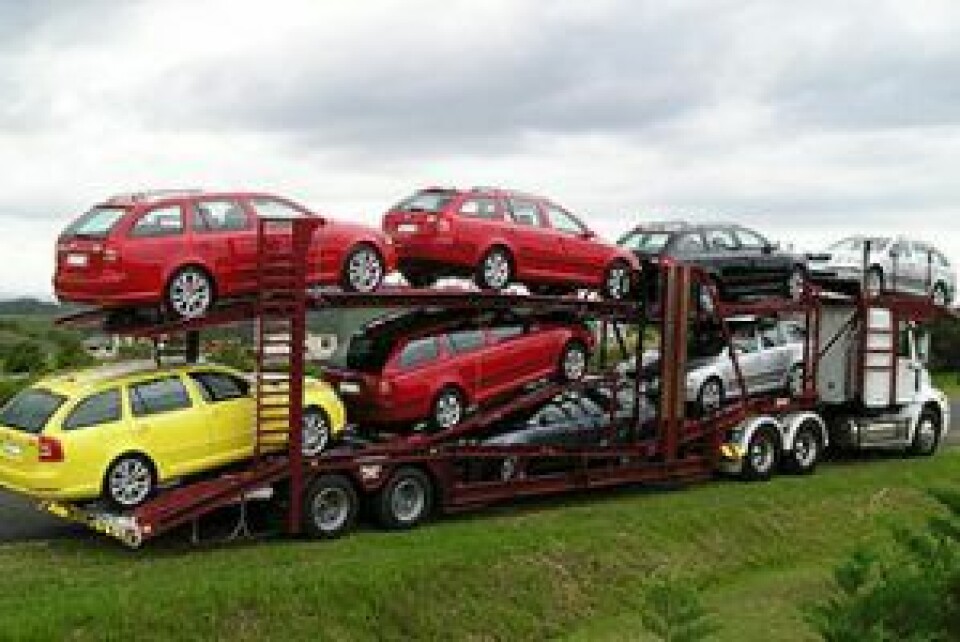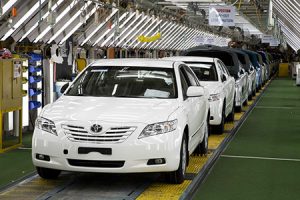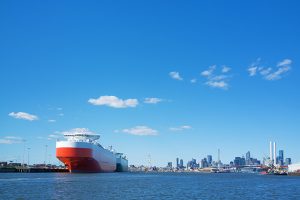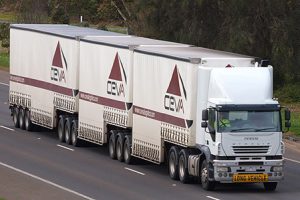All change for Aussie rules
After manufacturing comes to a close next year, will the finished vehicle logistics industry in Oz come good – or cark it?
 The end of car assembly in Australia is imminent and with it, comes a change to the face of the industry. This year, Ford is set to shut its Broadmeadows factory, north of Melbourne, while next year Toyota will axe its Altona plant, west of the city. GM’s Holden division will also close its plant in Adelaide by 2017.
The end of car assembly in Australia is imminent and with it, comes a change to the face of the industry. This year, Ford is set to shut its Broadmeadows factory, north of Melbourne, while next year Toyota will axe its Altona plant, west of the city. GM’s Holden division will also close its plant in Adelaide by 2017.
It has been suggested that up to 200,000 jobs could go across the industry, including in the supply chain. However, while it will be devastating for local suppliers and logistics providers serving the plants, many outbound logistics providers could actually see their business increase. The Australian market has been strong, up nearly 4% in 2015 to more than 1.15m units, surpassing a previous record from 2013 (sales in the first two months of 2016 are up a further 4.8% compared to 2015). Imports, which have already dominated the Australian market for decades, will increase further, and are likely to make up for lost exports from local plants for most ports.
Bryan Yeo, senior consultant for transportation and logistics in Asia Pacific at Frost & Sullivan, says that once domestic assembly has ceased, there will be greater pressure on Australia’s port and handling facilities.
Investment has already started to occur. In 2014, the Port of Melbourne Corporation announced it would expand its role in Australia’s vehicle supply chain with the development of a new terminal and facilities at the port’s Webb Dock West. “The project will ensure that Melbourne retains its position as Australia’s key automotive trade port,” Yeo says.
The resulting terminal, Mirrat (Melbourne International Ro-Ro Automotive Terminal), which is owned by shipping and logistics provider Wallenius Wilhelmsen Logistics (WWL), will commence operations this month. With a $65m investment, Mirrat is planning to have capacity to handle 600,000 vehicles by 2025 and 1m units by 2040.
Cameron McDermid, product development manager at APL Logistics, also sees Australia’s situation as positive for logistics providers. “More imports means more revenue for shipping lines, vehicle processing companies, port authorities, governments and taxes,” he says.
There are also investments taking place on land, where car carriers are expected to see demand increase. Ceva Logistics, which runs a car haulier fleet in Australia, recently announced that it is building a 166,000 sq.m facility west of Melbourne, which will handle finished vehicles.

Transmech is expecting a strong rise in car volumes in the next two years
Scott Hilditch, general manager at Transmech, an Australian car carrier and trailer manufacturer, expects the number of units that will be transported on his company's carriers to increase from more than 200,000 currently, to as much as 380,000 by 2017-2018. He also anticipates that Transmech will see a 50% increase in demand for its car-carrier trailers.
While road providers stand to benefit, analysts also suggest that population and sales growth beyond major urban centres like Melbourne and Sydney will put more pressure on the Aussie outbound network. Although the use of multimodal transport is currently low, with the significant majority of finished vehicle deliveries being by truck, there could be scope for more rail transport.
“Investment is vital to promote the use of rail as an alternative to long-haul vehicle freight and to increase its viability and competitiveness,” says Vijayendra Rao, intelligent mobility research director at Frost & Sullivan.
The end of the roadA combination of factors has led to the end of vehicle assembly in Australia, from rising costs and low economies of scale to strong competition from abroad. In 1970, the country’s vehicle output was around 475,000 units per year, according to the OICA. By 2007, it had fallen to around 335,000 units, even as the sales market had further diversified across more brands. Since Mitsubishi closed its factory in Adelaide in 2008, the remaining three plants produced around 220,000 units in total each year, a figure that has drifted even lower since the closures were announced. Last year, vehicle production in Australia fell to 167,500 units compared to around 175,000 in 2014, according to the country's Federal Chamber of Automotive Industries.
Rebecca Lindland, senior analyst at Kelley Blue Book (KBB), says that a well-managed and profitable car plant will produce around 250,000 units a year, but Australian plants have each been putting out barely a third of that, which has become unsustainable. There have also been issues with government regulations, policies and currency exchange. “All these factors add up to vehicles that are more expensive to produce and therefore less desirable for consumers,” she says.
A spokesperson for Toyota, the market leader in Australia for 13 years, points to relatively low volume and declining export competitiveness. In 2015, the carmaker built around 91,600 Camry, Camry Hybrid and Aurion vehicles at its Altona plant. Of this, around 70% were exported, a figure consistent with previous years, which means that around 90% of the carmaker’s 200,000 annual sales volume in Australia are already imports.
 Toyota is due to axe its Altona plant next year
Toyota is due to axe its Altona plant next year“The decision [to close the plant] was not based on any single factor,” says a spokesperson for Toyota Motor Australia. “The market and economic factors contributing to the decision include the unfavourable Australian dollar that makes exports unviable, the high costs of manufacturing, and low economies of scale for our vehicle production and local supplier base. Together with one of the most open and fragmented automotive markets in the world, and increased competitiveness due to current and future free trade agreements, it is not viable to continue building cars in Australia.”
Vijayendra Rao agrees that the market has become highly fragmented, which has forced a drop in production figures for various models like the Ford Territory and the Holden Commodore. Over the past few decades, Australia’s automotive industry has also gone from being one of the world’s most protected, with significant barriers to importing vehicles, to among the most open, with low average import duties and even lower tariffs for countries with which it has free trade agreements.
“Free trade agreements seem like a good idea until your locally produced goods become a lot more expensive, or are undermined by much cheaper imports,” says Lindland at KBB. “A consumer buys with their wallet. There are a lot of Aussies that would love to buy an Australian-made car, but it’s $5,000 more than a comparable car that has been imported.”
 "A consumer buys with their wallet. There are a lot of Aussies that would love to buy an Australian-made car, but it’s $5,000 more than a comparable car that has been imported" - Rebecca Lindland, Kelley Blue Book
"A consumer buys with their wallet. There are a lot of Aussies that would love to buy an Australian-made car, but it’s $5,000 more than a comparable car that has been imported" - Rebecca Lindland, Kelley Blue Book
Rao agrees that free trade agreements were the nail in the coffin for Australia’s plants. “The free trade agreements that Australia has established with most of the manufacturing regions, such as Thailand, South Korea, Japan and the United States, further crippled the manufacturing industry in the country because vehicles can be easily imported from these regions without import duties,” he says.
The open door to imports put pressure on an Australian supply base that has historically been weak anyway. “When you produce cars in Thailand, you wouldn’t use Australian suppliers. The same goes for Malaysia and Japan – there’s just no room for them,” says Dietmar Ostermann, global automotive advisory leader at consulting firm PwC.
According to Ostermann, the logic is harsh but simple. Rather than running a low-volume plant in Australia, OEMs would rather fill capacity at locations such as Thailand and then ship vehicles to Australia at a lower overall cost than would be involved in building them locally.
Australia is also part of the Trans-Pacific Partnership (TPP), a huge trade deal covering 12 countries in Asia and the Americas, including the US and Japan. It could open the door to more imports from across the Pacific Rim over the coming decade, although Ostermann doesn’t anticipate any impacts in the short term.
Outbound is ‘fit as a Mallee bull’Despite the end of Australian assembly, record sales and imports have benefitted the vehicle logistics industry, with new models and low interest rates supporting sales. “Other than significant job losses within the vehicle manufacturing industry, the logistics side will maintain, and possibly increase,” says Scott Hilditch at Transmech.
Along with transport, Transmech supplies trailers to the car carrier industry, including to Ceva Logistics, Patricks Auto Car, Prix Car and a number of smaller outfits. “Automotive logistics will most certainly change with the demise of automotive manufacturing in Australia,” says Hilditch. “This business will grow as demand increases. The growth of manufacturing automotive trailer equipment will benefit our business as well as other local businesses we partner with.”
The most significant change likely to occur for vehicle logistics providers will result from reconfiguring routes across ports, which may provide opportunities for some carmakers and providers to consolidate more volume.
“With the size of our country and the relatively small market compared to the USA, any increase in volume is a more positive move from a logistics standpoint,” says the Toyota spokesperson. “This means more cost-effective transport movements, and the suppliers can reinvest in their fleet for safer and more environmentally-sound deliveries.”
 Australia's port and plant network – click to enlarge
Australia's port and plant network – click to enlargeWhile Australia imports vehicles from across global regions, Asia dominates, with Japan, Thailand and South Korea the top three countries of origin by a wide margin. Though Japan remains important, its share of Australian imports has declined steadily. Analysts expect imports from Thailand to increase significantly once manufacturing in Australia ceases. “Thailand is probably top of the list to increase,” says PwC’s Ostermann. “Toyota basically owns Thailand. Ford has sizeable operations in Thailand, too.
“Labour costs are low and logistically, it’s well connected to Australia,” adds Ostermann.
South Korea is also expected to see an increase in shipments to Australia. Ostermann points out that, along with Hyundai-Kia products, GM has spare capacity at its Korean factories after the carmaker recently ended Chevrolet sales in Europe, while low demand for small cars in the US has also cut shipments from GM Korea. “GM’s Korean factories are below capacity and will now look to export to Australia,” he says.
Rao at Frost & Sullivan anticipates that demand in Australia will remain at or above the million-unit mark over the coming years, which will maintain demand for imports and related services. “We foresee that the demand beyond 2017 will be satisfied solely through imports, which will mean a rise in handling traffic for the country’s ports,” he says.
KBB’s Rebecca Lindland also sees opportunities for ports and shipping lines. “Logistics companies that can keep costs under control, manage economies of scale and operate faster, safer, and more efficient ships are going to win the race because the demand in Australia is growing,” she says. “Logistics-wise, this is an absolute opportunity to build and ship vehicle, and get those vehicles onto really efficient ships.”
Among the country’s ports, the Mirrat terminal is one of the most ambitious vehicle logistics projects. According to Jed Smith, head of commercial and stakeholder management at Mirrat, the terminal will handle 100% of automotive volumes in Victoria by 2018, which currently represents around 27% of the total Australian market. It also expects to work with all OEMs that have a presence in Australia. Smith says the facility has plenty of space to handle volumes well into the future.
“The reality is that the volumes currently being exported through the port of Melbourne are higher than the expected import volumes that will fill the gap left from domestic production,” he says. “Over the past five years, export volumes from Melbourne have averaged around 70,000 units per year, whereas annual sales of domestically produced vehicles in Victoria represent between 35,000-38,000.”
 Growing imports into Australia should lead to greater volumes for shipping lines
Growing imports into Australia should lead to greater volumes for shipping linesWith more volume spread across Australia’s ports, rather than concentrated at plants, there may be higher demand for truck transport to handle destinations flexibly, which experts say Australian providers are well positioned to handle.
“Australia’s setup is very efficient and extensive. OEMs will continue to review how best to move their products to and within Australia,” says Christian Rossow, key account manager at Ceva Logistics. “Obviously car haulers will try to accommodate the increase in imported cars either directly for OEMs, or through shipping lines such as WWL.”
Smith at Mirrat says dealing with vast distances is part of doing business in Australia, with well-established supply chains feeding remote and regional areas.
“Trucks are the major mode of transportation with alternative options being very limited,” he says. “Population growth outside of the major cities is growing – albeit slowly – so the freight task to these areas is only going to grow.”
Despite trucking’s relative dominance, Smith suggests there may be room for rail or short-sea options in future. “It’s an interesting challenge for the industry which may require a multimodal solution,” he adds.
Rao at Frost & Sullivan also believes that further developing rail transport is important to the sector. He adds that Australia may face some capacity and infrastructure investment gaps in other areas as well. Outside Melbourne, there are questions over wharf and dedicated car terminal capacity. Australia’s extreme weather, large size and difficult terrain also create barriers for the internal automotive logistics market. The sector will need to focus on ensuring there is sufficient investment in key infrastructure so that Australia will have the capacity to support future operations.
"The free trade agreements that Australia has established with most of the manufacturing regions, such as Thailand, South Korea, Japan and the United States, further crippled the manufacturing industry in the country because vehicles can be easily imported from these regions without import duties" - Vijayendra Rao, Frost & Sullivan
Carmakers and logistics providers should work together more to plan and develop their deliveries, says Rao. “The industry should implement certain methodologies and solutions to work in partnership with customers to review and address their supply chains to deliver savings in terms of costs and efficiencies,” he says. “This includes overcoming pressures such as ever-shortening customer lead times.”
A chance to come goodThe loss of local assembly is a blow to Australia, not only in jobs and skills but also in its self-image. Many pundits and politicians have highlighted that the country was one of only a dozen or so in the world that could build a car from design and engineering through to assembly.
 While trucks dominate the Australian transport scene, some suggest there will be more room for rail and short-sea options in future
While trucks dominate the Australian transport scene, some suggest there will be more room for rail and short-sea options in futureWhile that will no longer be the case, the industry will remain a vital part of Australia and its economy. Ford Australia will keep the important engineering and design centre that designed the latest Ford Ranger pickup and the Everest SUV, which are sold around the globe. Holden will also hold on to its Melbourne design centre, which is well regarded by GM for its concept cars.
Toyota plans to consolidate its corporate functions in Melbourne by the end of 2017, closing an office in Sydney, while most of its Altona site will be retained for new and relocated functions. Meanwhile, Toyota’s four parts centres throughout the country will undergo major reform to improve their competitiveness.
Such changes will bring plenty of pain, including in the supply chain, but vehicle logistics providers that make the right investments and develop services to meet demand from ports and Australia’s growing regions will stand a good shot of surviving and thriving Down Under.
*Correction. The original copy stated that Transmech handles vehicles, but it is in fact a car carrier and trailer manufacturer. This has now been changed.





